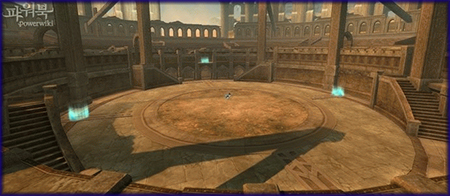Survival tournament guide
Author: demonero

Some players say that Survival Tournaments are the best way to determine your skill level. However, some players don't consider them as tournaments at all, saying that all you have to do is to kill loads of creatures.
So, what is a Survival Tournament? It requires players to predict mobs' actions as well as forces players to be attentive and use appropriate tactics during the whole battle. This article describes some of basic strategies for all factions.
This is the most common feature used by players. It allows you to predict and change positioning of coming mobs on the battlefield. Using this feature you can move weak stacks closer to you and the most dangerous ones - further away. Professionals are able to move enemy stacks so that hydras, faeries, dragons, etc. can damage them all.
Let's analyse the shifting mechanism.
Have a look at coordinate scale on the battlefield.

The shifting feature has the following rules:
1) When a neutral creature enters the battlefield it goes to the closest empty spot. The distance to any square can be calculated by the formula:
Where ![]() - are coordinates of an entering spot and
- are coordinates of an entering spot and ![]() – coordinates of a presumable spot.
– coordinates of a presumable spot.
2) If you have several closest spots, the creature goes to the spot with the lowest coordinates
First shift example:

Hellhound stands at the place that goblins suppose to go to, and spawns stand next to hellhounds. Goblins have 2 potential spots (red circles). Goblins go to the spot with the lowest X coordinate, therefore goblins are going to the spot under hellhounds.
Second shift example:

Here goblins have 2 potential spots as well (red circles). The distance is the same for both of those spots,but goblins go to the spot with the lowest X coordinate.
Third shift example:

The picture is an example of moving two 1-squared enemy stacks so that faeries, cerbers etc. can attack them both.
The left zombie stack has 2 potential closest spots, in this case distance to both of them is equal to 2.83. Those spots have the same X coordinate, in that case zombie stack goes to the spot with the smallest Y coordinate. The top zombie stack has 2 closest spots as well. According to the rules it prioritizes a spot with the smallest X value.
4-squared creatures have slightly different mechanics. Their X and Y coordinates are taken at the top left corner of the stack. These creatures require 4 empty squares to enter. The distance is counted by the same formula using coordinates of the top left square.
Shift example 4:

Here is an example of shifting a 4-squared creature stack. The closest distance is 2.24 so the stack goes there.
Players usually struggle with moving from one wave to another. Inexperienced players are certain that the best way is to wait with all your units before moving to another wave. However, experienced players are using a special technique of switching defend and wait buttons. It is based on one rule:
Creatures in all waves are 50m apart from the starting point on the ATB scale. The wave appears at the first turn of the player's creatures: startATB = 50
So if a stack you finished mobs with is far apart from your next stack on the ATB bar, then after you finish up the wave, all your creatures will move forward on the ATB bar, and if you calculate everything correctly, even the stack that you have finished a wave with, will have it's turn before the mobs’ turns.
There are many different ways of using the ATB feature, but we can summarize them as follows:
1. When your stack has 2 turns in a row. The wave comes with your first stack's turn, and that stack has the best position. The disadvantage of this method is that your stack can "burst for more action", in that case it will take twice as long for all your other stacks to get their turn and they may not survive that long.
2. 2.1. You have 2 stacks with the same initiative points, one of them will finish up the wave. (examples: wolves-orcs; vermins-hellhounds). In this case you should wait with one stack and finish up with the other. Make sure that no other creatures are in between these 2 stacks on the ATB bar. You can fix it with waiting and defending buttons. The killer-stack will have it's turn before the new comers (most likely).
Here is one of these examples:

Here we have 2 vampire stacks. The amount of creatures in the stack doesn't matter at all. Here 11 vampires are the killer-stack.
The question is: "How can you be sure that it is going to work?" Have a look at the initiative bar on the next picture:

If you wait with vampires they stiil will be first.
We will explain a couple of moments here:
- After waiting, vampires may have their turn after golems, but it's perfectly fine. After you kill golems, they will disappear from the ATB bar.
- If you wait with your vampires, then 11 can have their turn after 2. This is perfectly fine too, since you have 2 stacks with the same initiative (11 and 2 vampires) which are apart by 1 waiting period. After waiting with 11 vampires both 2 and 11 will go one after another, in the same order as in the beginning of the battle. Let's have a look at the result. This is what we get on the next wave.

On the next wave we have bowmen (initiative=9). Vampires have their turn before bowmen therefore we have used ATB feature correctly.
Note: This method won't work with phantoms, after stunning blows or if you stack isslowed.
2.2. If all your stacks have different initiative, the first thing to do is to pick the killer-stack. Your aim is to make a long distance between your killer stack and your other stacks on the ATB bar. You need to defend with your killer stack and wait with all the other ones until the killer creature will have it's turn before any other. Once you get it, defend. This will increase the ATB distance. You are ready to go, if after trying to wait (put a cursor on the waiting button, but don't press it) with your killer stack it still has it's turn.
Let's apply it in a battle.

Here skeletons are the killer-stack.
Make sure that all your stacks have their turn before skeletons. Try to wait with your stacks. If after waiting they have their turn before skeletons press wait button (a blue line). If when you click wait they have their turn after skeletons, then defend. (a red line). On the next picture, if you try to wait with zombies, they will have their turn after skeletons, therefore you should defend with them. In this case we have the following situation:

If you wait with skeletons now, they will still have their turn before all other stacks so you can finish up the wave now.
Note: The best killer-stacks are high-initiative creatures, otherwise other creatures with higher initiative can change the ATB bar not in his favour.
The results of the 2.2 method are on the picture:

Skeletons have their turn before gargoyles (ini=9).
3) New wave always comes during your first stack’s turn. If your killer-stack will have 2 turns in a row it will have a good position on the ATB bar during the next wave. If you want to go "all in" you can try to make your killer-stack have 2 turns in a row, but in that case be carefull, as your stacks can "burst for more action".
We are pretty sure that during ST Elves, Dark Elves and Demons have noticed that sometimes your most initiative stacks (Forest Keepers, Hell Horses and Shrugs) have 2 turns before the enemy's stacks. Moreover in some cases they do have an extra turn and in some cases they don't. Whenever it happens the initiative of your most initiative creature is slightly lower than doubled initiative of the coming mobs.
Why does it happen?
The answer is discreteness of the ATB bar! On a new wave your stack that has the first turn is not necessarily at the point 100 ATB meters. It can be anywhere between points 100 and 100+INI where INI is the initiative of the stack. It happens because the continuous scale has to use more resources in order to calculate everything, so the Administration has created a discrete one. The discreteness of the scale is to measure positioning of each stack each ATB second.
There is a formula, which allows to calculate the lowest initiative making it available to have 2 turns on a new wave.
INIstack=(50.1+ceil(50/INIenemystack)*INIenemystack)/(1 + ceil(50/INIenemystack))
INIstack – the lowest required initiative of your stack.
INIenemystack – the initiative of an enemy stack (the stack that you want to have 2 turns before).
сeil – rounding up to the nearest whole number.
It doesn't garantee you a 100% chance for 2 turns but it is the lowest boundary for the event to occur. Therefore the top boundary is INIstack=2*INIenemystack.
All the obtained results are shown in the table 1:
| 6 | 10,5 | 12 |
| 7 | 11,8 | 14 |
| 8 | 13,3 | 16 |
| 9 | 14,9 | 18 |
| 10 | 16,7 | 20 |
| 11 | 17,6 | 22 |
| 12 | 18,4 | 24 |
| 13 | 20,5 | 26 |
| 14 | 21,3 | 28 |
| 15 | 22,1 | 30 |
A formula: We need to create a formula that will allow us to calculate the lowest initiative of a stack so that it will have a chance to have 2 turns before the enemy stack.
We have: A stack starts a wave, therefore it's position on the initiative scale is between [100;100+INIstack-0.1] meters.
So, the maximum ATB point, considering disreteness, is 100+ INIstack -0.1 meters. Initiative of the stack = INIstack.
The enemy stack starts a new wave from a 50 meters point.
Let's make an equation for our stack and the enemy's stack. After it's first turn your stack will have a new turn from a point INIstack -0.1 meters. Therefore:
INIstack -0.1 + INIstack*t = 50 + INIenemystack*t
t- time before the enemy's stack will have it's turn. t can be obtained from the formula.
t= ceil(50/INIenemystack), We have to round up here because of the ATB bar discreteness: time can't be a noninteger number.
So here we have the following equation:
INIstack*(1+t)= 50+0.1+ INIenemystack*t
or:
INIstack = (50+0.1+ INIenemystack*t)/( 1+t)= |t= ceil(50/INIenemystack)| = INIstack=(50.1+ceil(50/INIenemystack)*INIenemystack)/(1 + ceil(50/INIenemystack))
The survival tournament has a lot of features (both general and for each faction), it takes a really long time to describe them all. In this article we have tried to explain the most important ones. We hope this article will provide you with a better understanding of Survival Tournaments.

 Being attacked by a thief? Find out who he is!
Being attacked by a thief? Find out who he is!
 Potions’ and elixirs’ effects in different combats
Potions’ and elixirs’ effects in different combats
 Artifacts with the "Artifact shop" status
Artifacts with the "Artifact shop" status
 Faction skills, parameters, and players
Faction skills, parameters, and players
 Dynamics of character development
Dynamics of character development







